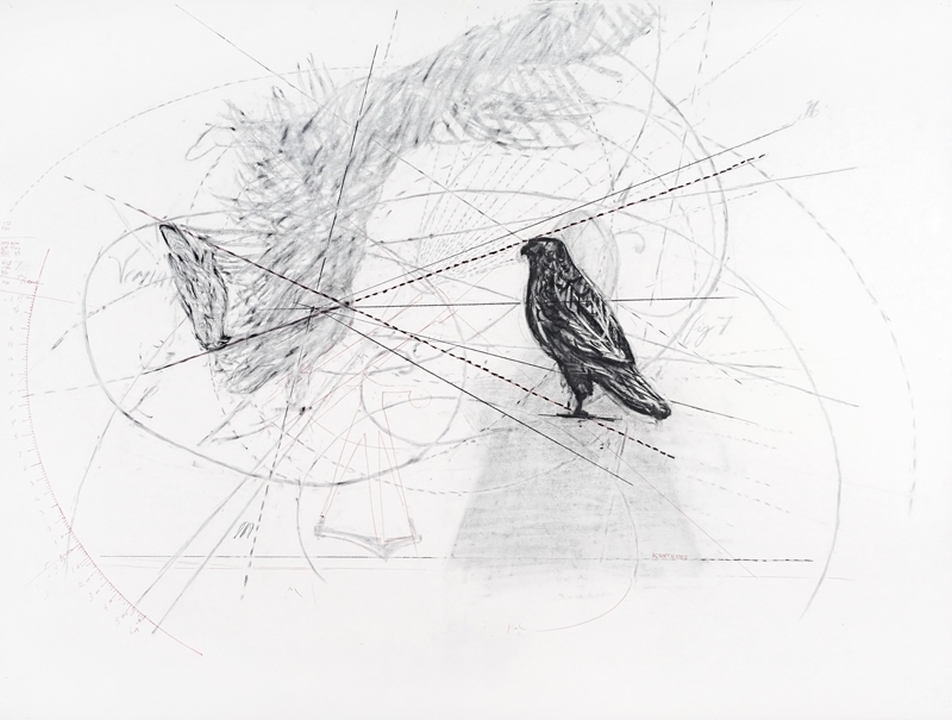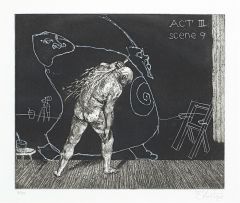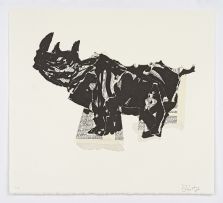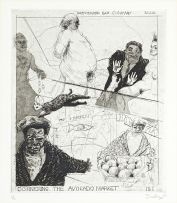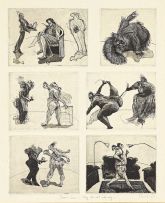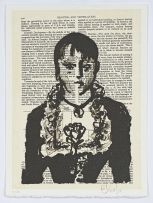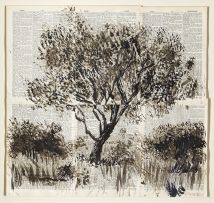Important South African & International Art, Furniture, Decorative Arts & Jewellery
Live Auction, 13 October 2014
Important International & South African Art Evening Sale
Incl. Buyer's Premium & VAT
About this Item
signed, executed in 2004
Notes
Drawing for 'The Magic Flute' was made for William Kentridge's production of Mozart's Die Zauberflöte, commissioned by La Monnaie / De Munt in Brussels, where it opened in April 2005 before touring to several international venues and being staged in South Africa in 2007.
Two birds face one another, the shadowy falcon pitted against the pale spectre of an inverted bird, as if viewed through the viewfinder of a pinhole camera or camera obscura, evoking the opposition between light and dark that lies at the heart of Mozart's Enlightenment-inspired vision of order and awakening.
Lyrical coils, characterising the Queen of the Night's onstage appearances, also refer to the movement of heavenly spheres. They intersect with rectilinear lines referencing technological and scientific devices that have been used to measure, record, and carve up the world. Once projected, and reversed into negative, they literally become drawings made with light.
The black bird is reminiscent of the imposing falcon in Learning the Flute, of which there is one in the collection of the Museum of Modern Art in New York. As Kate McCrickard points out, it recalls the commanding black granite statue of Horus, the bird of reason "presiding at the entrance of the two hypostyle halls at the Ptolemaic temple of Edfu in Egypt".1 While amplifying the Egyptian themes introduced by Mozart and his librettist, its sombre mien contrasts starkly with the more playful bird imagery of Papageno, the opera's comical bird-catcher.
In this drawing the falcon is still, rooted, solid, a source of concentrated power in relation the outstretched, beating wing drawn back in flight, suggesting energy, motion and transcendence. The technique of drawing and erasure that Kentridge has made integral to his creative process records assertions and revisions and leaves traces of mental and physical expression. The page thus becomes the stage in which the artist conjures characters and gives form to ideas.
1. Kate McCrickard, (2007) 'I am the Bird-Catcher' in Bronwyn Law-Viljoen, William Kentridge: Flute, Johannesburg: David Krut Publishing. Page 133.
Literature
Bronwyn Law-Viljoen (ed.) (2007) William Kentridge: Flute, Johannesburg: David Krut Publishing. Illustrated on page 132.
